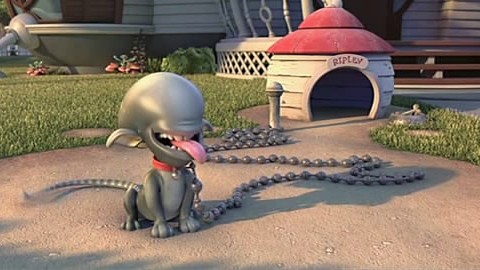Science
Related: About this forum'Chameleon' Vine Discovered in Chile

Move over, Sherlock Holmes. There is a new master of disguise—and it’s a plant. Camouflage and mimicry are usually reserved for the animal realm. The hawk moth caterpillar scares away predators by resembling a snake. Myrmarachne jumping spiders imitate ants as they creep up on unsuspecting insects—fangs ready. Fewer examples of mimicry—or crypsis—are known for plants. But as in some mistletoe species in Australia, all of these imposters copy only one other species. That’s not the case with the woody vine Boquila trifoliolata, which transforms its leaves to copy a variety of host trees. Native to Chile and Argentina, B. trifoliolata is the first plant shown to imitate several hosts. It is a rare quality—known as a mimetic polymorphism—that was previously observed only in butterflies, according to this study, published today in Current Biology. When the vine climbs onto a tree’s branches, its versatile leaves (inset) can change their size, shape, color, orientation, and even the vein patterns to match the surrounding foliage (middle panel; the red arrow points to the vine, while the blue arrow indicates the host plant). If the vine crosses over to a second tree, it changes, even if the new host leaves are 10 times bigger with a contrasting shape (right panel). The deceit serves as a defense against plant-eating herbivores like weevils and leaf beetles, according the researchers. They compared the charlatan leaves hanging on branches with the leaves on vines still crawling on the forest floor in search of a tree or scaling leafless trunks. Herbivory was 33% and 100% worse for the vines on the ground and on tree trunks, respectively. It is unclear how B. trifoliolata vines discern the identity of individual trees and shape-shift accordingly. The vines could read cues hidden in odors, or chemicals secreted by trees or microbes may transport gene-activating signals between the fraud and the host, the researchers say.
more
http://news.sciencemag.org/biology/2014/04/scienceshot-chameleon-vine-discovered-chile
dixiegrrrrl
(60,010 posts)Makes one re-examine definitions of "awareness", IMHO.
Baitball Blogger
(46,711 posts)Judi Lynn
(160,540 posts)Who on earth could have expected something like this?
It is a natural wonder, nothing but.
PADemD
(4,482 posts)The late Dr. Lyall Watson (Beyond Supernature) and the late Cleve Backster (Primal Communication), to name a few.
DamnYankeeInHouston
(1,365 posts)gtar100
(4,192 posts)animal has. And long after we humans have messed up our chance at immortality among the stars, plants will continue their mysterious takeover of the Earth.
Helen Borg
(3,963 posts)Otherwise, how can they mimic the visual pattern of the leaves?
Hun Joro
(666 posts)or something else to climb on. They know where it is, and their growth in that direction is definite.
brett_jv
(1,245 posts)
Guys, plants can't 'see' ... come on. Anytime it seems like they can 'see', it's actually an illusion.
TalkingDog
(9,001 posts)If there is nothing for them to climb onto they simply fall onto the ground in a tangle. Or if the upright is out of reach, the same thing happens. They don't grow in the direction of an upright, they follow the sun.
Test this hypothesis for yourself. Take several cups, plant a green pea in each and provide an upright for each at increasing distances. I assure you, there is no seeking behavior.
Spitfire of ATJ
(32,723 posts)Like this guy:

The only reason he was humanoid was because he used human DNA.
When he took a dog he looked like this:
